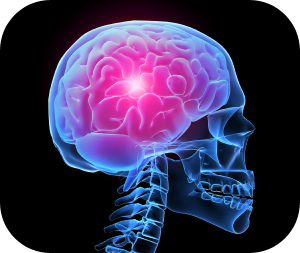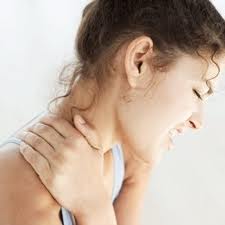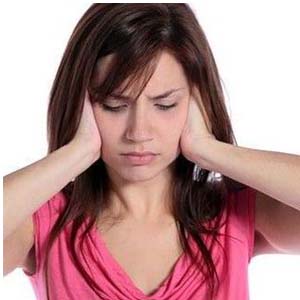Continued from Part 3
Chronic post-traumatic headache
Most persons who have had head injuries have local pain or tenderness at the site of impact for a few hours or even for a few days, after which many become symptom-free. However up to one half of all persons who injure their heads sufficiently to warrant hospitalization develop chronic post-traumatic headaches.
A small number of patients with headaches that persist after head injury have pain due to bleeding in the epidural, subdural or subarachnoid spaces, which is potentially lethal and needs urgent neurological attention. The headache of subdural hematoma begins at the time of trauma or the regaining of consciousness and persists, often for weeks or months, until the hematoma is removed. Blood in the subarachnoid space may induce headache, as may adhesions after head injury involving pain-sensitive structures in the arachnoid. However most patients with post-traumatic headaches that persist or recur for long periods after head injury have no identifiable intracranial abnormalities to explain their pain and some of these have a ‘compensation neurosis’ – a psychogenic type of pain.
Causalgia
Causalgia is a persistent burning pain, often in the lower jaw that follows surgery or trauma. The cause is unclear and there is no good evidence that it is related to a peripheral nerve lesion or to psychogenic causes.
If a local anesthetic injection relieves causalgia then cryoanalgesia may effect relief, but neurosurgery may be required.
Frey syndrome
Frey syndrome is a sudden burning pain, usually in the temple area or in front of the ear, associated with flushing and sweating on eating, which often follows parotid gland surgery and appears to be due to abnormal innervation.
Functional causes of orofacial pain
The mouth and soft tissues around the mouth have among the richest sensory innervations in the body. Furthermore, a large part of the sensory homunculus on the cerebral cortex receives information from orofacial structures. Right from infancy, the mouth is concerned intimately with the psychological development of the individual and disorders of structures, such as the lips, teeth and oral mucosa can hold enormous emotional significance. It is hardly surprising therefore that there are a range of psychogenic types of orofacial pain.
Features common to most conditions with a psychogenic component, sometimes termed ‘medically unexplained symptoms’ (MUS), include the following:
-
Many are female
-
Constant chronic discomfort or pain
-
Pain often of a dull boring or burning type
-
Pain that is poorly localized
-
Pain that rarely wakens the individual from sleep; however sleep disturbances are common
-
Total lack of objective signs of organic disease
-
All investigations are also negative
-
There are often recent adverse ‘life events’ such as bereavement or family illness
-
There are often multiple oral and / or other ‘medically unexplained symptoms’, such as headaches, chronic back or neck pain, irritable bowel syndrome, insomnia, numbness or painful menustration
-
Cure is uncommon in most, yet few of those suffering seem to try or persist in using analgesics
The reason for ‘medically unexplained symptoms’ may include the following:
-
Possible links between neurohumoral mechanism and altered central nervous system function
-
The heightening of bodily sensations (lowered pain threshold) as a consequence of physiological processes, such as autonomic arousal, muscle tension, hyperventilation or inactivity
-
Misattribution of normal sensations to serious physical disorders
Psychogenic (tension) headaches are common, especially in young adults. The headache which is caused by anxiety or stress-induced muscles tension, affects the frontal, occipital and / or temporal muscles, and is felt as a constant ache or band-like pressure. The pain is often worse by the evening, but does not waken the individual. Reassurance may be effective, but the pain may be helped by massage, warmth, non-steroidal anti-inflammatory drugs (NSAIDs) or benzodiazepines, such as diazepam, as this is both anxiety-relieving drugs and a mild muscle relaxant.
The most common types of orofacial pain with a strong psychogenic component are:
-
Atypical facial pain
-
Oral dysaesthesia (burning mouth syndrome)
-
Atypical odontalgia
-
The syndrome of oral complaints
Referred cause of orofacial pain
Pain may occasionally be referred to the mouth, face or jaws from the following:
- Neck: cervical vertebral disease, especially cervical spondylosis, very occasionally causes pain referred to the face
- Heart, in patients with angina: the latter pain usually affects the lower jaw, is initiated by exercise (especially in the cold) and resolves quickly on rest.
- Lungs: orofacial pain emanating from lung cancer is a well-recognized entity and have been misdiagnosed as temporomandibular joint pain
- Esophagus: pain plus sialorrhoea (excessive saliva) may result from esophageal lesions
- Styloid process (stylagia): eagle syndrome, a rare disorder due to an elongated styloid process, may cause pain on chewing, swallowing or turning the head
- Eyes: pain from the eyes can arise form disorders of refraction, retrobulbar neuritis (for example in multiple sclerosis) or glaucoma (raised intracranial pressure) and can radiate to the orbit or frontal region.
- Ears: middle ear disease may cause headaches. Conversely, oral disease not infrequently causes pain referred to the ear. Particularly from lesions of the posterior tongue. The classic picture is an elderly man with an undiagnosed tongue cancer who complains of ear pain.
- Pharynx: carcinoma of the pharynx may cause facial pain
Diagnosis of orofacial pain
The cause of orofacial pain is established mainly from the history and examination findings, but it important to consider the usefulness of additional investigations, particular imaging of the head and neck, using CT or MRI. It is important not to miss detecting organic disease and thus mislabeling the individual as having psychogenic pain. Even individuals with psychogenic disorders can suffer organic pain.
Management of orofacial pain
Pain is the most important symptom suggestive of oral disease, but absence of pain does not exclude organic disease and presence pf pain does not necessarily mean organic disease. There is also considerable individual variation in response to pain and the threshold is lowered by tiredness and psychogenic and other factors:
-
Simple analgesics, such as NSAIDs, should be used initially before embarking on more potent preparations. Chronic pain requires regular analgesia.
-
Antidepressants may help in pain or psychogenic origin
-
Anticonvulsants may help in neuropathic pain (neuralgias)
-
Opioids may help in cancer pain
It is important also:
-
Where possible, to identify and treat the cause of pain
-
To relieve factors that lower the pain threshold (fatigue, anxiety and depression)
-
To avoid polypharmacy


